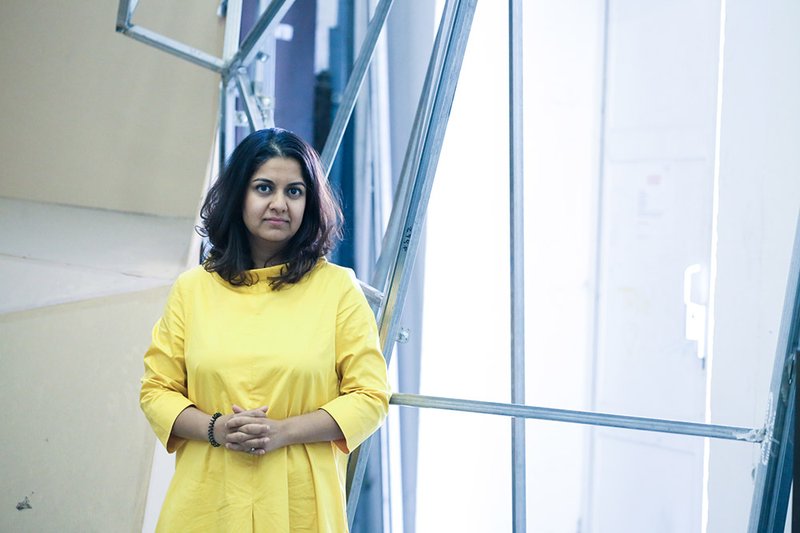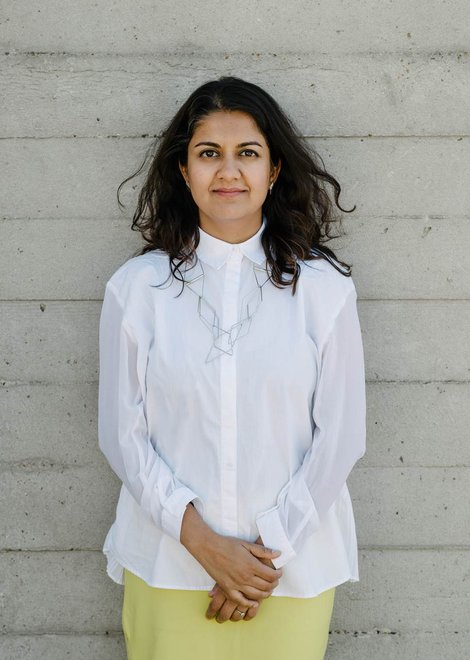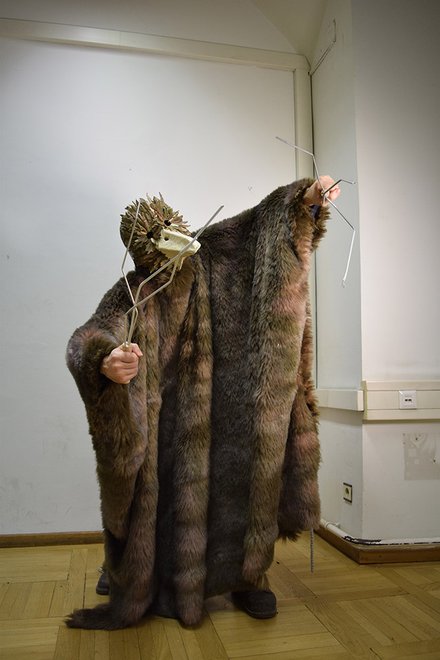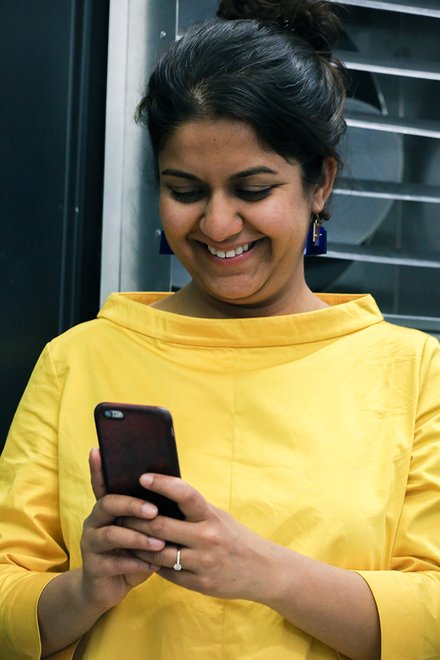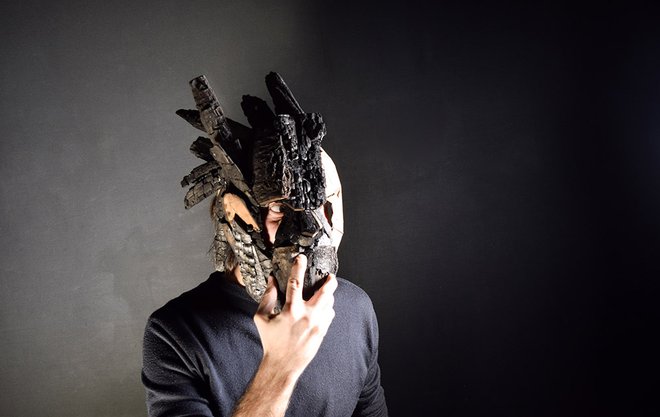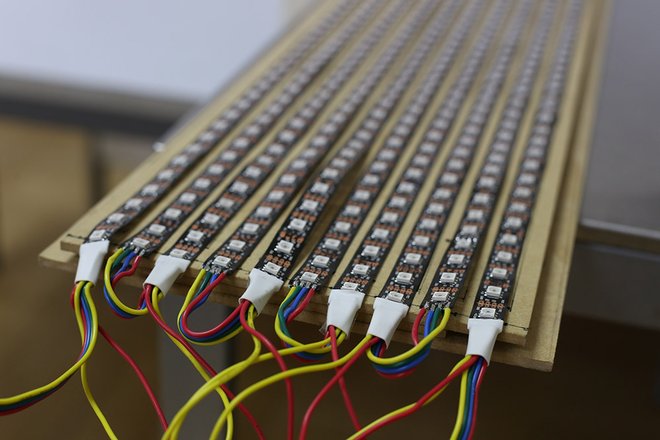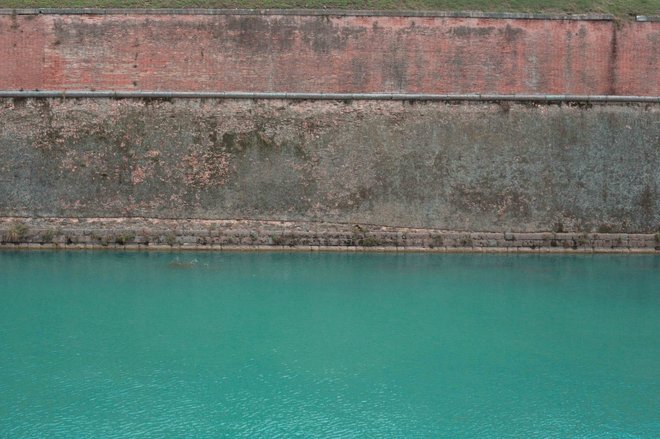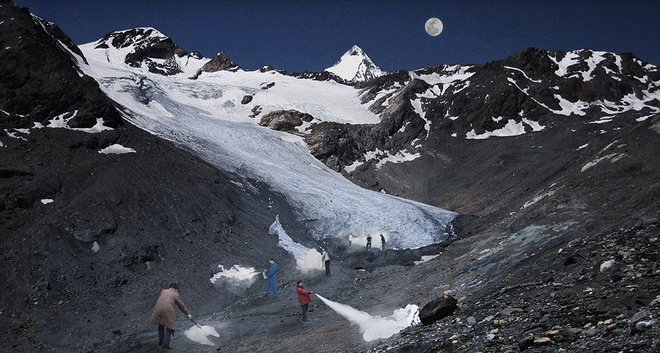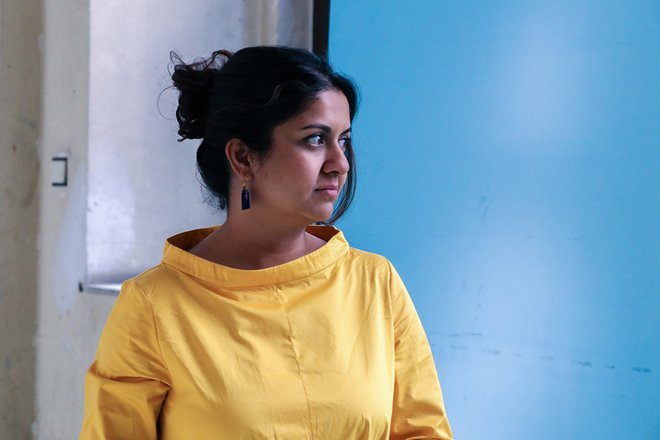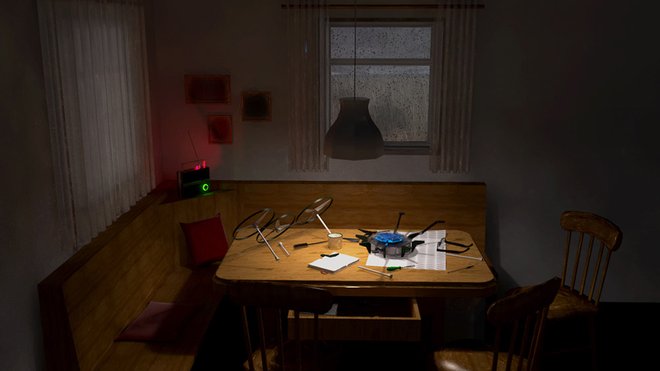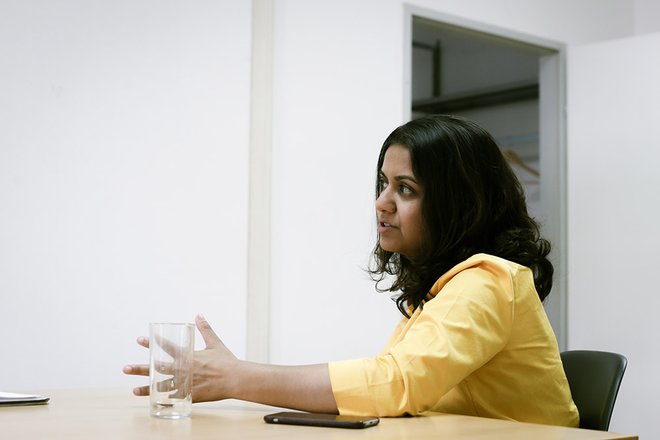How will we live and love in the future?
We met Anab Jain, futurist, filmmaker, and co-director of the London based Superflux design studio. We discussed with her how our relationship to food will change in the future and what her profession of looking into the future entails. Raised in a family of architects in India, she always dreamed of working as a doctor, but instead she became a designer almost “by accident”. The now internationally acclaimed designer explains why smart cities and robots might not solve all of our problems and why she likes to call herself as an “angry optimist”.
“I am angry, we are all very angry.”
How would you explain your work to your son? What is the job of a futurist?
That’s an interesting question. I can’t really explain it to my child. We don’t think of ourselves as traditional futurists, I am a designer. I was originally trained as a filmmaker, then I studied interaction design, now I work with the future. It’s a real blur of disciplines. On one level we at Superflux think about the future and look at future techniques. But on another level – with the same projects – we create prototypes, tell stories, and bring things to life.
Telling stories is a big part of your business, isn’t it?
Storytelling is indeed a major part. Developing narratives of an alternate world is important to us. We tell stories about people, objects, and technologies. It’s crucial to not just talk about the future, but rather to enable others to experience some future world very directly.
What is the best story you have ever told?
I think this hasn’t happened yet (laughs). But one recent project might be a example for a good story. In “Mitigation of Shock” we basically recreated an apartment in London from the year 2050, which was exhibited at the Centre de Cultura Contemporània de Barcelona. At first glance the apartment resembles a normal home – it’s got a sofa, a dining table, bookshelves, lamps, and a kitchen. As soon as you start looking around, you find signs of a very different world. The newspaper headline gives visitors an idea of a complete collapse of the climate-related economy and a break-down of food production. A radio show is playing, informing listeners about the uncertainty around food supplies this week. On the shelves you find recipe books with titles such as Pets as Protein or How to Cook with Scarcity.
The visitors also discovers a fox skin in the kitchen ...
... yes, we imagine that along side all the growing and bartering, perhaps urban pets like foxes might also get foraged in crisis to eat and cook them. When you turn around the corner an entire space that would normally be used for relaxation was transformed into a space dedicated to the indoor production of food. Superflux – which my partner Jon Ardern and I founded together – designed and built a whole food computer from foam. To us the project was not about just talking about shortage, rather it enabled visitors to walk through this apartment directly and immerse in a comfortable yet alarming future.
How much room to live will we have in future?
We will probably need space to grow food indoors because of the uncertainty around the weather; crops might not survive outside. There will be cooperatives where people will share and exchange their food, since the supply chain might break and you might not get a shipment of food for a long period of time. Obviously, people will use whatever they can get their hands on. It will be a matter of survival, not like today’s lifestyle attitude where people grow a few tomato plants on their balcony. We will have to think about what food we can produce on our own in order to feed our families.
“Growing tomatoes will be a matter of survival, not like today’s lifestyle attitude.”
How private is this going to be? Will we have to open our house for others or become glassy people in order to survive?
No, we should also imagine people who are starving and will break into houses to scavenge food. But I do think that certain networks will be put in place. Local organizations will be formed for food bartering. Someone is able to grow tomatoes, someone else might be able to grow beans – so you share or trade in your local network, almost like social media but around food. These groups will form organically because the need for those resources will make sharing essential. Obviously, that is quite a utopian image, a more likely scenario is that there will be riots around food shortages, which is already happening in some parts of the world.
What are you most worried about in the future?
I am worried about climate change. It’s a big thing that is already happening. The news we get everyday – the immigration policy of the US, the climate change realities – it’s almost becoming difficult to imagine any future that is not going to be messier and darker than today’s reality. As a futurist – or as a person who reflects upon the future – my work is to talk about the future in order for people to make better decisions in the present.
“I have a six-year-old son – I have to be an optimist…”
Are you a pessimist?
I have a six-year-old son – I have to be an optimist… kind of. What I am optimistic about is that if we understand the world we are trying to create for our children, we can also begin to shape it differently. Because there are, in fact, alternatives.
Why does the future have – and this wasn’t always the case – such a bad image nowadays?
It’s really curious because in the popular imagination the future is still envisioned as a very shiny one. If you look at any corporate imagination or at advertising and all the images people consume the future is thought of as a destination where everything will be fine and all the problems will be fixed. One where we will live in this smart city, where you just touch things and images will pop up and robots will do all of our work for us and everything will be amazing. But this is a utopia fabricated by the media and corporations.
The academic world is always so negative about the future. Is this a kind of common sense today?
The fiction writer Kim Stanley Robinson, who reflects upon climate change a lot, called himself an “angry optimist”. This term really resonates with me. It describes how I feel. I am angry, we are all very angry, because we feel so powerless. What can one individual possibly change?
At the same time I am optimistic because I know that we, as communities and with the available tools and potential legislation, can collectively create a future which is not highly unequal socially, which is not just taking away jobs, which is not making climate change wipe us out. A vision that enables us to comprehend our place not simply as the center of the world alongside other species and nature. There are so many ways in which we can and must invest our energy in those alternatives. We urgently have to.
“In my hometown we just get water one hour a day.”
What drives you is also a political approach?
Absolutely.
How did your childhood in India influence your path now?
In many ways! One is the cross-cultural perspective: I have more than just a Western perspective, I wasn’t brought up in this world of abundance. In my hometown, still today, we only get water for one hour a day. That’s it. There are very dry, desert-like conditions and shortages of water. When I was growing up my parents would have one hour to fill up every bucket in the house with water. You had a quick bucket bath as there were no showers. There was no such thing as a washing machine. So, I grew up with an idea of scarcity already. My parents worked hard and were able to get a tank that could store water on top of the house, that way the rest of the day we could flush, we could carry on living as if there was water. But that is not the case for a lot of people in India.
When I traveled to developing countries I sometimes saw design solutions that were quite clever. What can we learn from them?
I agree. I mean these days we tend to look at the policies that the “First World” is coming up with. I have to question what “First World” and “Third World” is. Economically it might be the “First World”, yes, but politically, socially, and culturally? A designer friend of mine launched a competition called “Design for the First World” where designers had to come up with solutions for the “First World” because often it’s the other way around. It’s really intriguing because it’s true, people in all parts of the world are very inventive – of course, why shouldn’t they be? The “First World” has this conceited mindset that inventiveness, innovation, engineering, and ideas are privileged resources, but they are not. We don’t need anything to come up with a good idea. And often very little to implement it.
“We don’t need anything to come up with a good idea. And often very little to implement it.”
Why is social media so important and influential right now?
The shift with these technologies is the speed with which we receive information and the speed with which we share this information. They are so quick that we don’t really have time to consume, to digest, to even consider them. It is just this algorithmically mediated flow. There are systems that we are embedded in which are shaping our “realities” ...
... and social media acts like a curator for us and shaping our “realities” ...
... almost, it is slowly becoming one without us noticing.
What are the biggest challenges the future brings for you and your fellow designers?
I think most people in my world are thinking critically about technological advances. We are all struggling with the unintended consequences of technology.
That’s interesting!
Take YouTube, for example. The way the user experiences the design is as follows: As soon as one video ends another video starts playing. And all similar videos pop up beside to it. Many young people have become so addicted. They keep clicking and watching lots of them and don’t sleep and then get ill. And why? All because of an interface design ...!
Do you think the profession of a designer will become increasingly important in the future?
I am not so sure about that… I think designers tend to believe that. On the other hand, everything needs to be designed, even bacteria need to be redesigned. The challenges designers will face will not be restricted to a single product. It will involve ethics, the right materials, and biodiversity, for instance.
„Filmmakers have influenced my work a lot.”
Do companies ask for your help?
Sometimes. But in general we don’t provide the straightforward solutions they usually ask for. We dont have the answers.
May I ask you a few personal questions? What makes you happy?
Happiness is a momentary thing, isn’t it? We have ups and downs, but obviously my family makes me happy! My partner and I work and live together. I suppose the biggest challenge for us is to have a genuine holiday. We only recently started going on real holidays – and we are not very good at it! We lack the practice. But it is something we enjoy.
Was there a particular point in your youth when you decided you wanted to do something with “the future”?
No, I got into it by accident. I thought I was going to be doctor. I had the right grades, but I applied for design school while I was waiting got accepted. Then I enjoyed design school more than I expected. I come from a family of architects. I suppose in some way I was co-opted into the creative process. But soon I was completely determined to be a filmmaker. I started a five-year film direction program.
“The future is now.”
Who influenced your work?
I would say filmmakers have influenced my work a lot. To name a few: the Russian director Andrei Tarkovsky or Jean-Luc Godard and Wim Wenders, of course. It comes down to the ability to reflect and be self-reflective. To be able to think in a nonlinear way, no Hollywood linear storyline with cause and effect.
Is that how you also work?
For us, the future is atemporal, meaning, the future is not a fixed destination. The future is now. In every moment and with every act we make, the future is unfolding right in front of us. This mode of perception helps us to think in a nonlinear and atemporal – not in a “past-present-future” – way.
Thank you for the interview!

